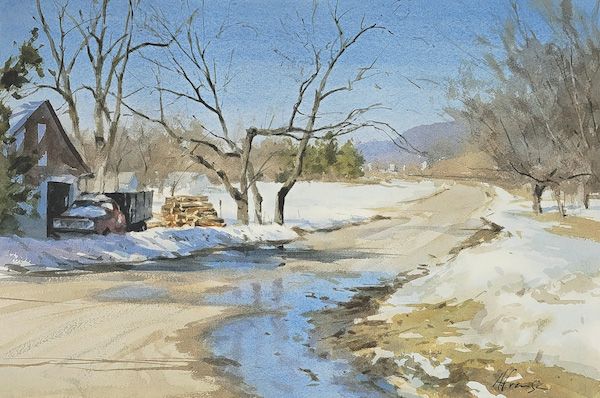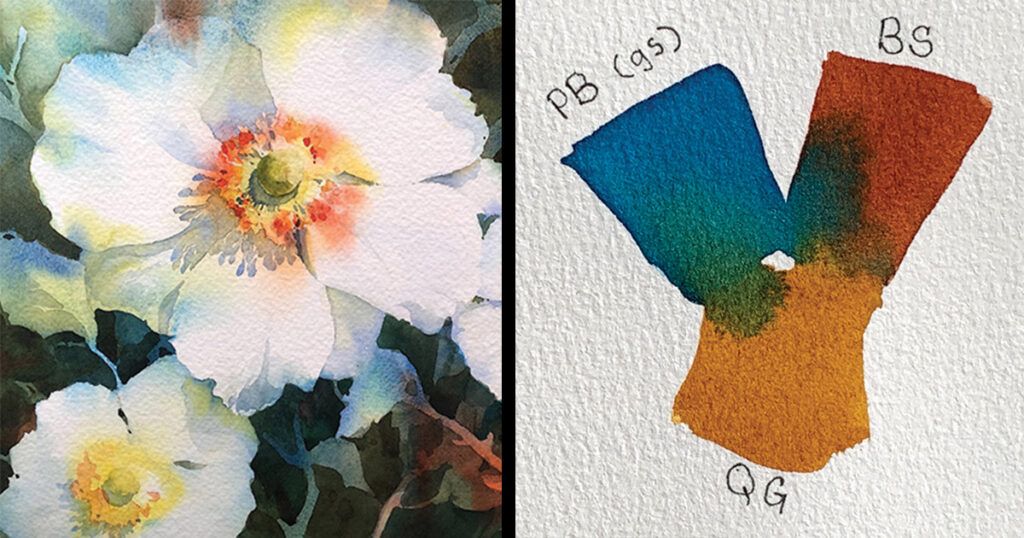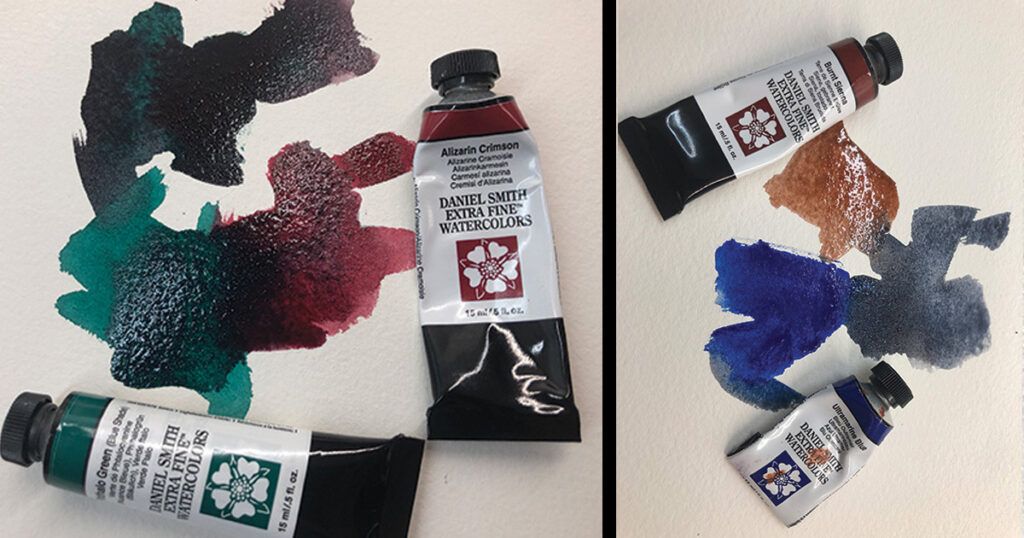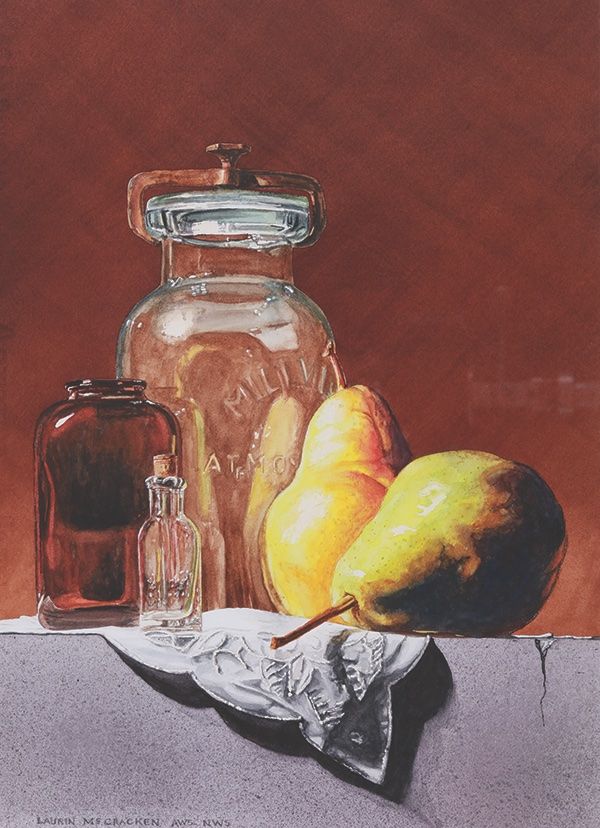In the Slide 2022 problem of Watercolor Artist Magazine, we questioned 5 excellent watercolor painters the issue “What are the 3 tube colours that are usually on your palette?” In this article are their responses. What are 3 tubes of watercolor that you just cannot live without having?
Andy Evansen
Cerulean blue has develop into my most loved blue. I love the way it granulates, and it creates superb greens as nicely. The yellow I use most is Holbein’s uncooked sienna—a splendidly clean, warm pigment that I use thoroughly in my landscapes. I use a incredibly pale clean of it in my clouds at moments. I achieve for it to make organic greens, and it’s also successful for portray a convincing sand or grime-road colour when blended with Holbein’s lavender, which is the third indispensable colour on my palette. I blend the lavender with cerulean blue to create a selection of hues in my skies. Its opacity takes the edge off a great deal of the hues I see in this article in Minnesota during wintertime and spring.

Brenda Swenson
You could say that I have an aversion to tube greens. Eco-friendly is the most different color in mother nature. When I paint flora, employing damaging painting methods, I establish up color with passages of several glazes. I have to have hues that are clear, mix nicely with some others and are capable of generating darkish and saturated greens that are not flat or uninteresting. My go-to paints for this objective are phthalo blue inexperienced shade and quinacridone gold by Daniel Smith, and Winsor & Newton’s burnt sienna, which is in the purple family. I can’t accomplish the colours I want with a burnt sienna designed with brown.

John Salminen
There are two combinations of colors that I use in all probability much more than the rest of my palette merged. These mixtures are alizarin crimson and phthalo eco-friendly, and ultramarine blue and burnt sienna. I use these combos to generate a variety of various grays. In the circumstance of the alizarin/phthalo mix, I can make either a awesome or warm grey merely by altering the ratio. Due to the fact ultramarine and sienna both equally comprise crimson, the resulting grays in this blend have a lovely purple forged. I have been happily making use of Daniel Smith colours for several many years, and I’ve occur to take pleasure in the regular higher high-quality.

Thomas W Schaller
A few pigments that I could not envision banishing from my palette are cobalt blue, burnt sienna and yellow ochre—all by Daniel Smith. From these a few “off primaries,” I can attain most of the contrasting and complementary results between heat/amazing and gentle/darkish that I want. In addition, from these 3 paints, I can get a whole selection of color—from brighter, fresher tones to much more earthy, nuanced neutrals. I can also use them to mix passable greenish hues as properly.
Laurin McCracken
A few of the colours that are usually on my palette are Daniel Smith’s phthalo blue (crimson shade), Aussie pink gold and McCracken black. I find phthalo blue (pink shade) to be the most multipurpose of all the blues. It’s a extremely loaded shade that can be used whole power to make complete-bodied blues or thinned out to be light—as may well be demanded in a midday sky, for example. It is also my go-to shade when mixing greens, creating
a large range of fantastic eco-friendly mixtures when blended with cadmium yellow (darkish, medium or gentle).
Aussie gold is a reasonably new color in the Daniel Smith line that is astonishingly loaded. I use it often as an underpainting color for fruit to develop a bit of punch. I also use this gold as a layer under dark colors these as quinacridone burnt orange, a blend that is effective specially effectively for subjects such as dark-brown antique bottles or on an outdated padlock.
I worked immediately with the colour chemists at Daniel Smith to produce the coloration McCracken Black. It is a abundant black that can be thinned out to a neutral gray. It is what I use to make the dark black backgrounds in my paintings. The coloration is a bit clear, so an underpainting can continue to have an impression. I apply it pretty thickly, scumbling it as I paint. It dries to a matte complete and—in spite of its dim appearance—is nonstaining.

Get the entire Slide 2022 problem of Watercolor Artist Magazine Currently!







